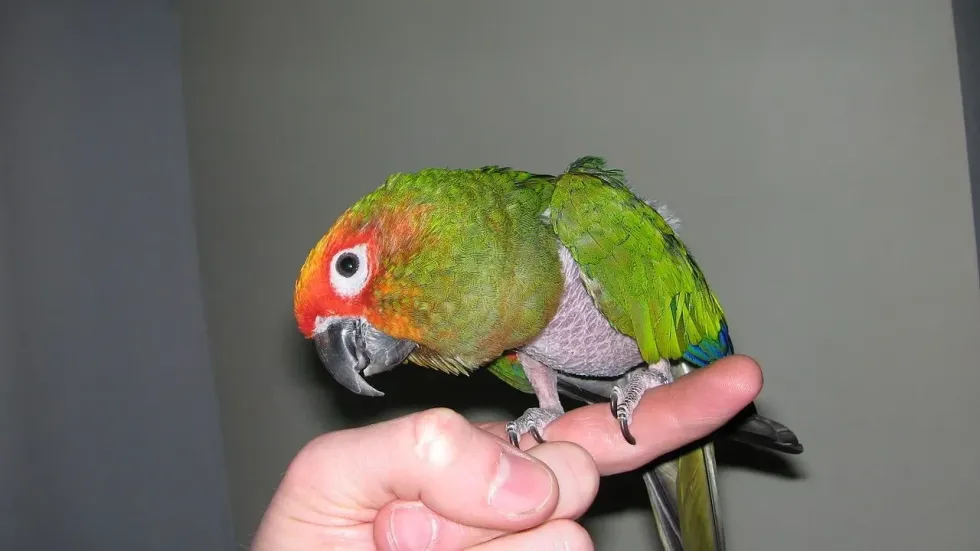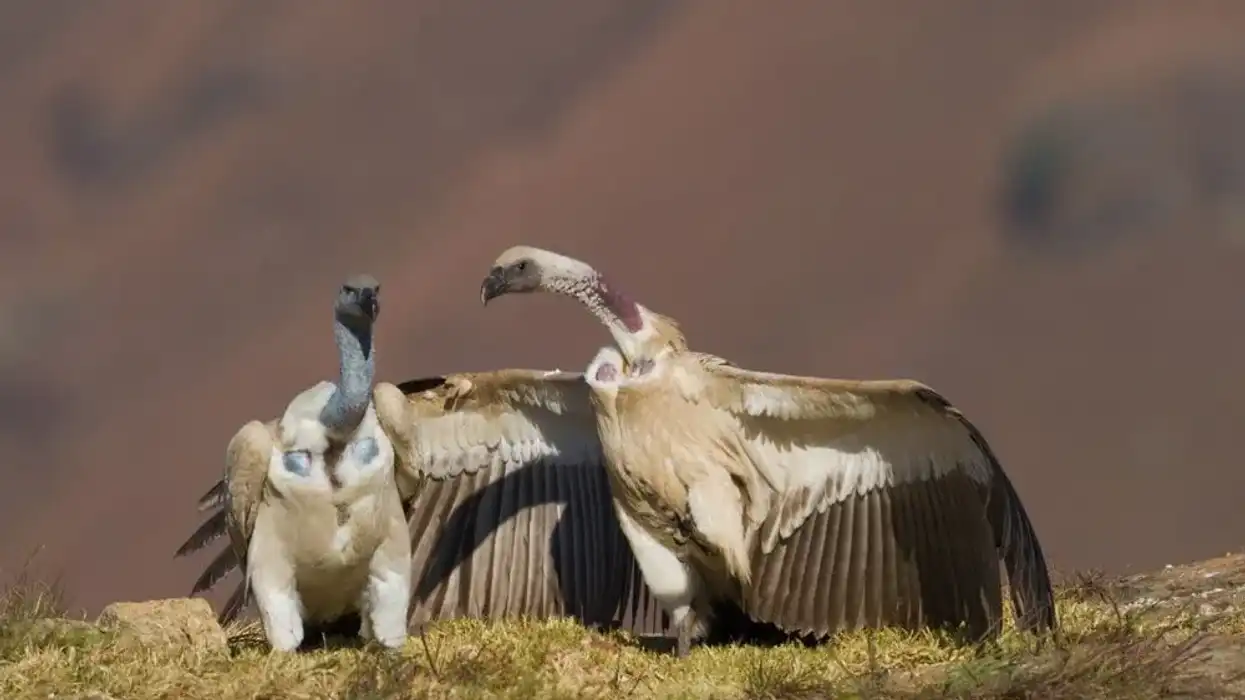The conure is a species of true parrot that consists of a large variety of parrot birds with similar characteristics. It is a famous bird thanks to its beauty and intelligence and forms a wonderful pet.
A gold-capped conure, wth the scientific name Aratinga auricapillus, is one such New World species of conure parrots native to Brazil.
This golden-headed conure is also known by some other names like the golden-capped parakeet or the golden capped conure.
They are the most brightly colored birds among all conures and they share a slight resemblance in appearance with macaws. This species (along with some other brightly colored members of their taxonomic group like the Jenday conure, the golden-fronted conure, and the sun conure) belongs to the genus Aratinga which means 'little macaws'.
The gold-capped conure is not a commonly observed bird and they do not have a wide range in the wild. They have a small population that is decreasing in some parts primarily due to habitat alterations. To gain more knowledge about these wonderful conures, you can read through these interesting facts.
For similar content check out the articles on the great green macaw and the night parrot too.
Gold-Capped Conure Interesting Facts
What type of animal is a gold-capped conure?
A gold-capped conure (Aratinga auricapilla) is a type of New World conure parrot.
What class of animal does a gold-capped conure belong to?
A golden-capped conure belongs to the class Aves, the common class for all birds.
How many gold-capped conures are there in the world?
A preliminary estimation has suggested that there are roughly around 6,700 mature individuals counted to this date, which equates to a population a little higher than 10,000 individuals. Pet trades have resulted in a decrease of the bird in the wild although its population in aviaries is continuously growing.
Where does a gold-capped conure live?
Golden-capped conures are a native species of Brazil and their range also extends to some parts of Paraguay. They are found in the southeastern parts of Brazil, from Reconcavo in Bahia to Minas Gerais in the south, including places like Sao Paulo, Rio de Janeiro, Espirito Santo, Goias, and Parana.
In Sao Paulo and Parana, the bird is mainly found in eastern forests but the species has totally disappeared from the forests of Espirito Santo.
Recent surveys have indicated that they are relatively more common in their northern range like in Bahia, Goias, and Minas Gerais. A moderate number of birds also populates the area around the Rio Grande Basin.
What is a gold-capped conure's habitat?
In the wild, golden-capped conures are found mostly in deciduous forests, inland transitional forests, or coastal forests. They are also well adapted to settle in human-modified agricultural lands as well as in urban developments. A secondary population of this gold cap species occurs in pastures, forest fragments or mosaics, savanna habitats, farmlands, and light woodland habitats.
Who do gold-capped conures live with?
The golden-capped conure is a gregarious bird that has a very friendly and peaceful nature. They live in large flocks in the wild without showing much aggression towards their group. They make very loving and playful pets and they are one of the easiest birds to train.
How long does a gold-capped conure live?
The average gold-capped conure lifespan ranges between 20-30 years.
How do they reproduce?
The breeding rate of golden-capped conures has become higher in captivity than in the wild because of a growing absence of suitable habitats. For this reason, the incidence of cage birds of this species is going up.
This bird reaches sexual maturity when it is two years old. They have some preferences regarding their captive breeding environments that need to be maintained.
Pairs only mate after forming a harmonious relationship with their partner and they are monogamous in nature. Female conures reproduce by egg-laying, and they can lay both fertilized and unfertilized eggs.
The bird lays around three to eight eggs after mating and the young birds emerge only from the fertilized eggs after an incubation period of 25 days. The whole process takes up to a month.
What is their conservation status?
The Aratinga auricapillus or the gold-capped conure is classified as a Near Threatened species in the IUCN Red List. These birds in the wild are constantly decreasing in number as they face difficulties breeding in their natural habitat.
For this reason, it is prohibited to hunt a wild-caught golden-capped conure. Apart from that, the issue of habitat loss has also started to affect their population.
Gold-Capped Conure Fun Facts
What do gold-capped conures look like?
The golden-capped conure (Aratinga auricapilla) flaunts a plumage of solid green, yellow and orange colors. The wings and the neck, up to the breast, are dark green in color without any yellow.
The feathers around the belly and breast are orange and green with some orange around the eyes. This fades to form a golden cap over the head. The gold cap of the head and the red feathers near it grow larger once the golden-headed conure reaches adulthood.
How cute are they?
A golden-capped conure is one of the prettiest conures that catches the human eye. The vibrant combination of green, yellow, and orange feathers is loved by many. Even the brightly colored mealy parrot may look dull next to them!
How do they communicate?
They mainly communicate by vocalizations. The bird has a loud and noisy shriek which helps it to communicate with others.
How big is a gold-capped conure?
The average length of golden-capped conures is 13-14 in (33-35.5 cm). They are similar in size to the gold-fronted conure.
How fast can a gold-capped conure fly?
The speed of this bird has not been determined yet.
How much does a gold-capped conure weigh?
They have an average weight of 4.9 oz (138.9 g). The species reaches a maximum weight of 5.3 oz (150.2 g).
What are their male and female names of the species?
Male and female conures are called 'cocks' and 'hens' respectively.
What would you call a baby gold-capped conure?
A baby golden-capped conure is called a 'chick'.
What do they eat?
These conures are frugivorous, meaning that they mainly feed on fruits. Apart from fruits they also eat flower petals, seeds, nectar, and lichens. They have a habit to chew on anything they get hold of.
Are they dangerous?
The golden-capped conure is a friendly bird that reacts well to training. They can be domesticated easily and are not dangerous at all, almost like Meyer's parrot.
Would they make a good pet?
Golden-capped conures are birds with great personalities and they make wonderful and affectionate pets, like many macaws.
Did you know...
This bird prefers to stay in its nest for long periods even when it is not breeding.
Keeping your own gold-capped conures
The golden-capped conure is a cheerful and affectionate bird that needs to spend a lot of time together with its human. They are highly playful and energetic birds that must be let outside of their cage at least once a day to burn any excess energy.
Two birds of different genders can be kept together but it is better to keep a single bird in one cage. This bird has a tendency to chew and nibble on anything it can get hold of which might damage things at home.
For this reason, they must be occupied with a large number of chewable wooden toys in their cage. Feeding on fruits and seeds is common.
Overall they have a great personality and are highly recommended domestic birds. The average gold-capped conure price ranges between $250-$600 USD.
The gold-capped conure's mating and birth process
Gold-capped conures are bred in large numbers in captivity. The process of breeding them is not very difficult, however, to initiate the process you have to determine their sex first.
Separating the sexes is difficult among these parrots due to their very similar physical appearances. The sexes can de be determined by performing surgical probes or by DNA testing of the bird. After determining their sex, a male and a female are put in a nesting box where mating takes place and eggs are laid.
Here at Kidadl, we have carefully created lots of interesting family-friendly animal facts for everyone to discover! For more relatable content, check out these rhinoceros hornbill facts and boreal chickadee facts for kids.
You can even occupy yourself at home by coloring in one of our free printable gold capped conure coloring pages.










